blog
[SurferSEO Case Study] Increase 45 Rankings in 1 Week Just By Onpage Optimization
Previously, when on-page optimization for a content page was mentioned, we often only paid attention to optimizing elements such as Title, Headings, URL, … or insert keywords in a somewhat ” industry ”is based on sentiment. That’s not to mention the fact that I don’t care what the Search Intent factor …
Often what is the consequence of that?

The worst case is to finish editing the content. Then the ranking will drop. Now, if you want to fix it, you don’t know how to do it.
The most frequent cause is that the ranking is almost standing still, neither increase nor decrease. When we fall into this situation, we often have a solution that is “pumping more links” with the hope that with the help of the link, the ranking will be improved.
The best case is to finish editing the content. Then rankings will increase significantly. But the question now is: do you know what you did to get your orders up? If I now apply what I do to a different content site, are you confident that it will bring such results?

I think most of us will have the answer “No” because we are still only following feelings or experiences, not specific numbers.
So if we want a specific number, where to look?
That’s when on-page analytics tools like Surfer SEO shines.
Below, I would like to share with everyone my small Case Study as well as how I used Surfer SEO to optimize Onpage.
THE REASONS TO USE TOOLS LIKE SURFER SEO.
Before presenting about Case Study, I want to share more about why SEOs in the world are increasingly obsessed with numbers when optimizing Onpage so.
Going back a little time, in the years 2014-2015, that was the period when I just started learning and doing SEO. Then, when it comes to Keyword Density, SEOs often transmit the optimal ratio for Keyword Density according to their own experience.

Some say 5% is a bit too much. Others say 10% is still normal, so there is no consensus on the numbers.
At that time, I, like many others, also followed the same way. With a guy at that time doing SEO for six months, and I had an English website with more than a hundred keywords purchased in the top 5 of Google, it was an unexpected success.
And I continued to optimize the content on my page like that for the next two years.
At the end of 2017, I first encountered the term TF * IDF and applied it to optimize SEO content.
This is also a turning point for quite a few SEOs in the world.
WHAT IS TF * IDF?
TF * IDF will evaluate the weight of a word by looking at the number of times it appears in a document (TF-Term Frequency) where the text in question is in a set of documents. Other (IDF-Inverse Document Frequency). Google itself has confirmed that it uses a variant of TF * IDF as an integral part of its search engine of the same name.

To explain this section to everyone more visually, I would like to use the example of AuthorityHacker.
For example, you have a database of 10,000 content pages, and you are looking for quickly the most content pages on a given topic.
The best way to do this is to search for content pages that appear only for certain words that are relevant to the topic you’re looking for.
Then, your job will be to scan these content pages and see how often the word (phrases) appear on these pages.
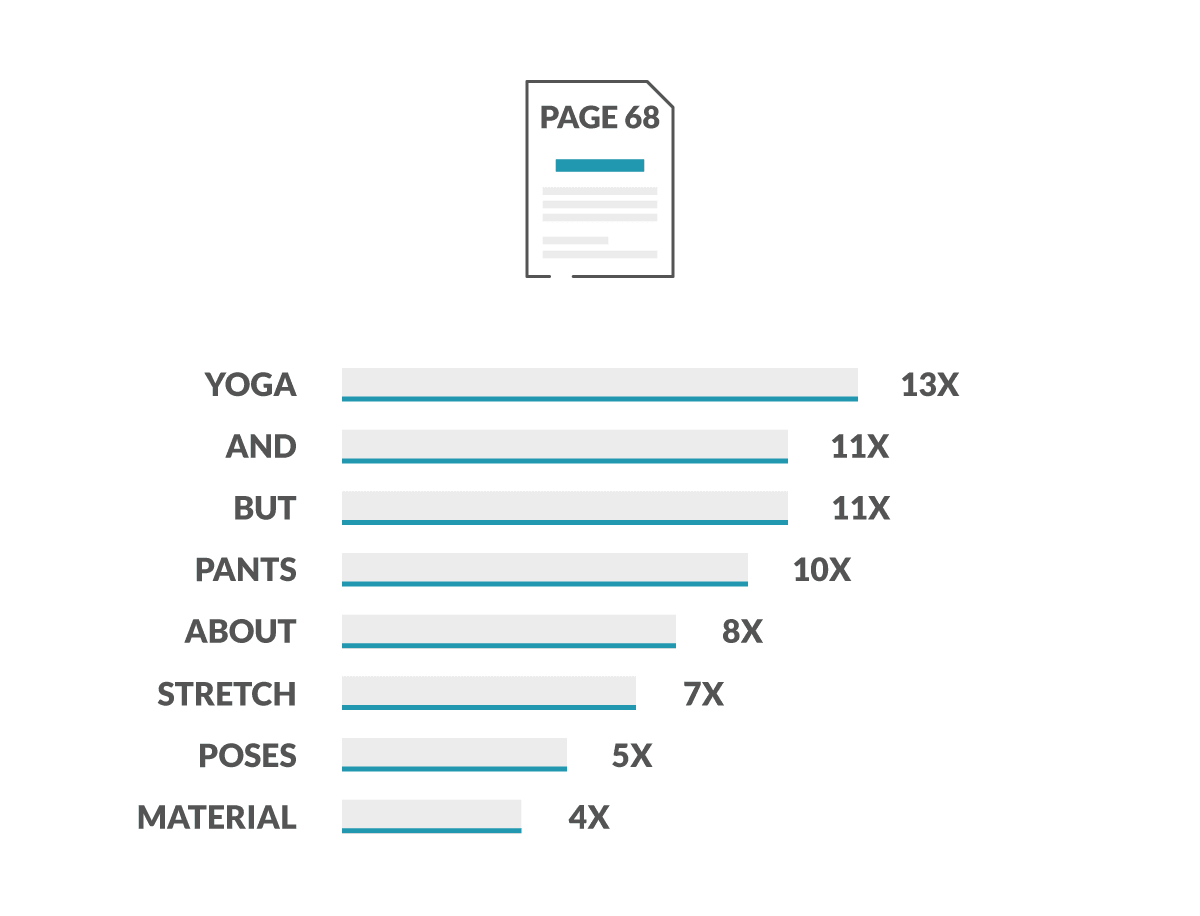
This is Term Frequency (TF).
However, you can see that there are a lot of unrelated words like “and”, “but”, “about” and it has the ability to confuse your data.
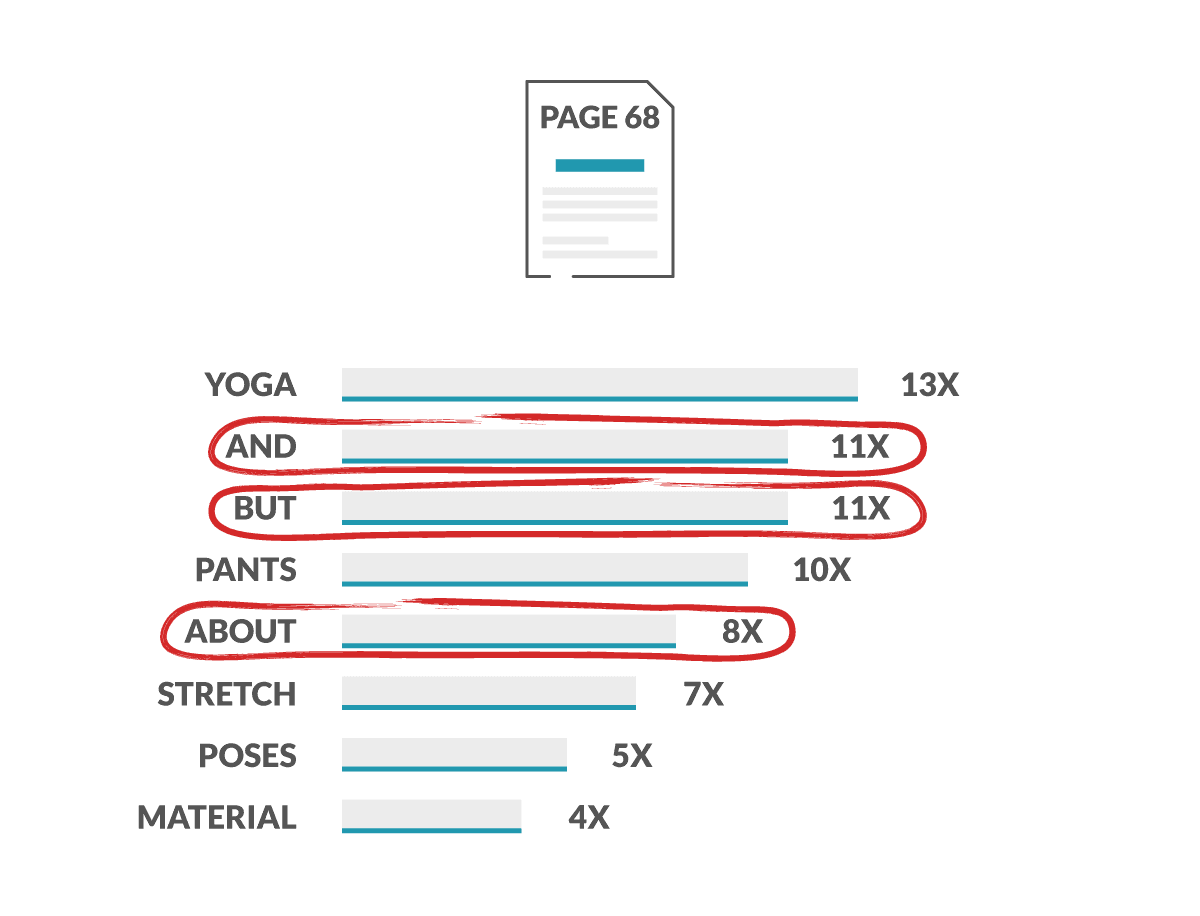
Now it’s time for the rest, Inverse Document Frequency (IDF) does its job.
IDF will evaluate the weight of each phrase (phrase) by looking at the uniqueness of those word (phrases) in all the data it has.
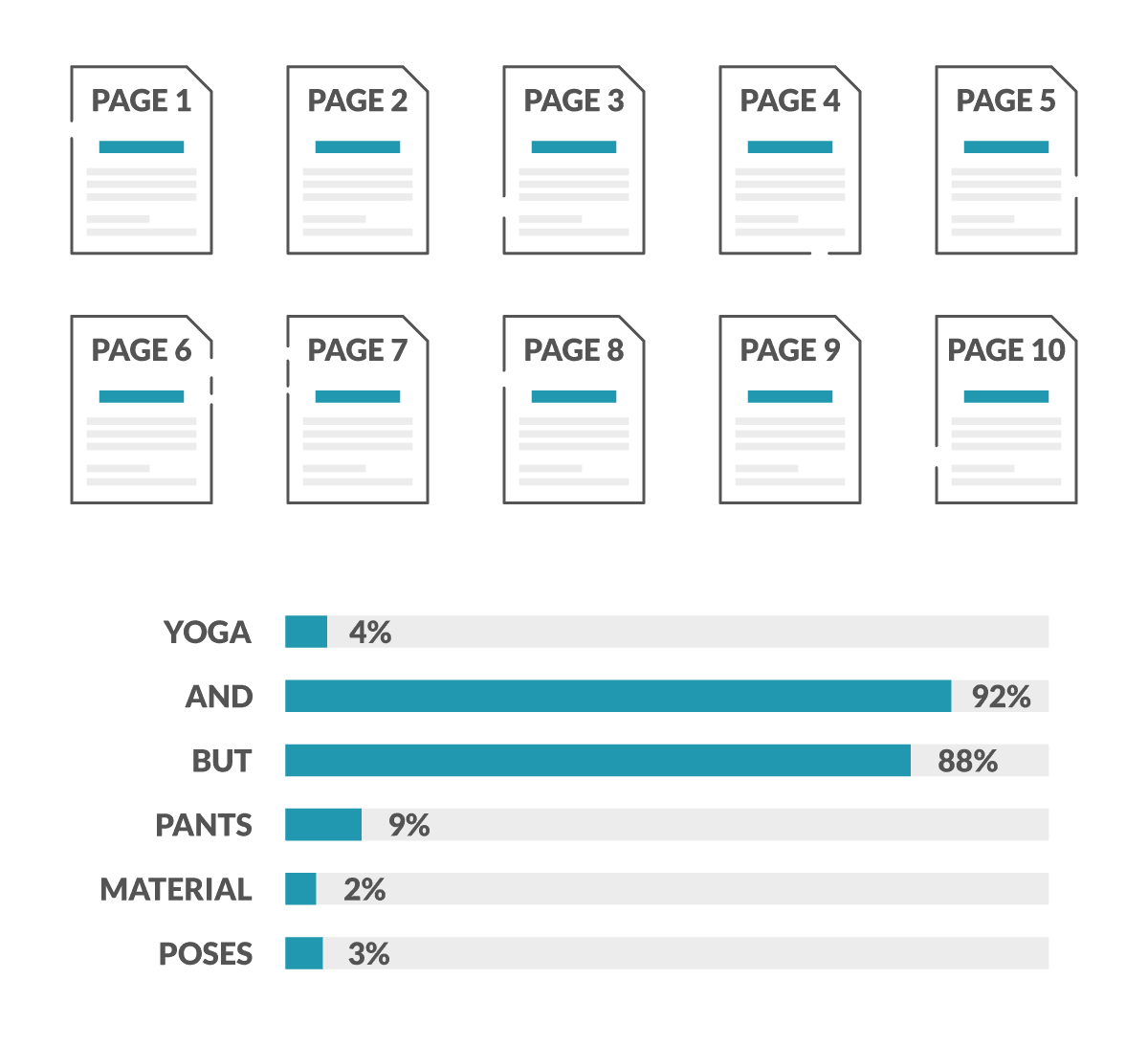
Thanks to the IDF, the words that are often used will not have a high weight because they are not very relevant to the topic being discussed.

By using TF * IDF, search engines can know which query the content page is related to show the right results to searchers.
While the topic of applying TF * IDF to SEO is still hot, Link Assistant – famous for its SEO Power Suite – launched TF * IDF analysis in its Website Auditor tool.
You will choose a content page on your website, select 1 keyword that you want to optimize for that content page, and all the rest will be left to the Website Auditor to take care of.
As you can see in the picture above, Website Auditor will tell us the following important information:
List of phrases (phrases)
The number of content pages (on page 1) that currently have that phrase (phrase)
The number of occurrences of those terms (words) on your content page
Average impressions of those terms (words) on a competitor’s content page
With those metrics, we can quickly gauge the importance of a given expression (phrase) and see if we have to add or remove those terms (words) to our content page. The unique thing is, all of these metrics are based on the same metrics that search engines are telling us.
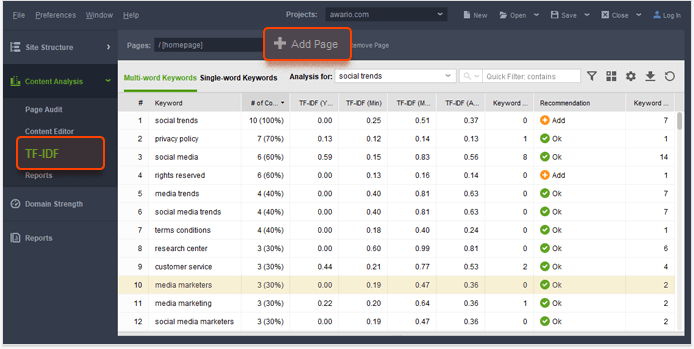
So, with the “innovation” of TF * IDF, SEOs are no longer obsessed with focusing on optimizing the density of specific keywords according to “sentiment” anymore, but now, SEOers can darken. For the whole content page with related words and very intuitive data.
However, what is the problem with using TF * IDF for content optimization?
First, the analysis tools TF * IDF are based on its original math, which “variation” of this algorithm Google uses is not apparent.
Second, in April 2019, John Muller – Senior Webmaster Trends Analyst of Google, said that TF * IDF is a pretty old standard, and now there are many other new standards.
So if now we do not use TF * IDF, what should we use to optimize the content?
Then Groupbuyseotools will introduce everyone to surfer seo tool. And detailed instructions on how to use this tool.
ABOUT SURFER SEO
Surfer SEO was born in a situation where more and more SEOs are obsessed with numbers. They now do not rely much on feelings or experience to optimize Onpage anymore but want to develop in a more data-driven direction.
In that regard, Surfer SEO can fully satisfy.
Although there are two most famous tools on the market today, Surfer SEO and Page Optimizer Pro, but myself (and many other SEOs) see Surfer SEO with a much simpler interface. So it’s easier to use.
For that reason, I chose Surfer SEO as a tool for my SEO content optimization.
Note: this is only my opinion and personal choice, not judging which tool is better
Surfer SEO also uses TF * IDF to calculate the weight and frequency of terms (phrases). However, the difference is that Surfer SEO is not trying to figure out how Google uses TF * IDF to analyze but analyze based on the results shown.
This makes Surfer SEO’s metrics updated continuously and independent of how Google applies TF * IDF to its search engine.
You can read more about Surfer SEO’s calculation here: https://surferseo.com/blog/tf-idf-seo-prominent-words-phrases/.
If you can explain it here, it’s already over 1,500 words. Hopefully, with the recent information, people have understood more about TF * IDF and the primary way the search engine works.
Okay, and now I ask for permission to go to Case Study. I started optimizing this content page on November 26, 2019, and below is the ranking of this content page for the keyword that I have optimized.
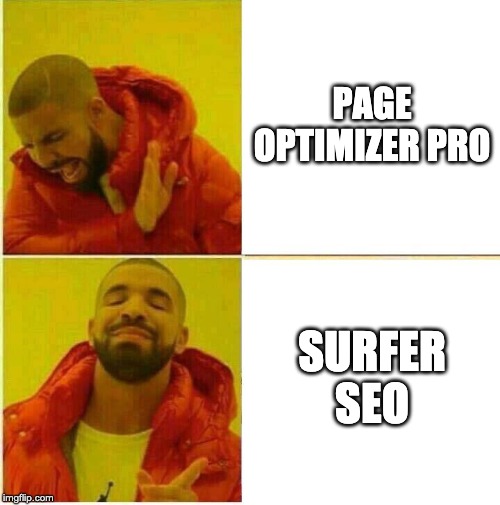
Groupbuyseotools is offering surfer seo for $ 4.95. You can use the full functionality of the premium plan
Functional overview of the Surfer SEO tool
enter keywords in the keyword search box on the SEO surfer tool

After letting Surfer SEO run and analyze the data, you click on the keyword that has just been studied. It will display a screen containing the information that Surfer SEO has only analyzed.
Then, scroll down and see the section “Compare your website to competitors” enter the URL of your content page (if your content page is not in the list) and press the “Audit” button. If the case is that your content page is on the list, you can click on the “Audit” button next to your content page.
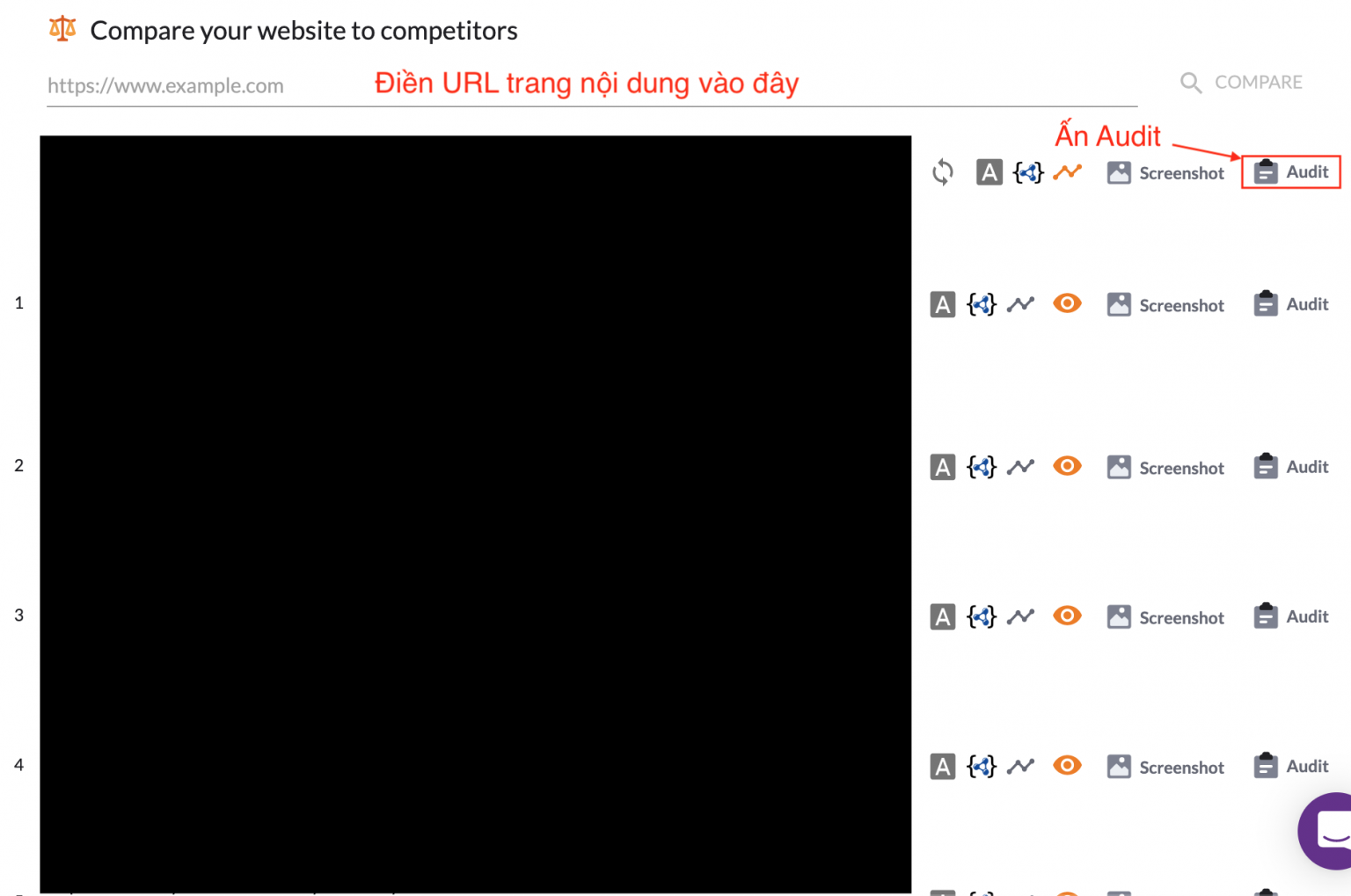
After pressing “Audit”, a screen of many different factors will be displayed by Surfer SEO to compare the status of your content page with competitors. I will insert a picture with the caption below for everyone to follow.
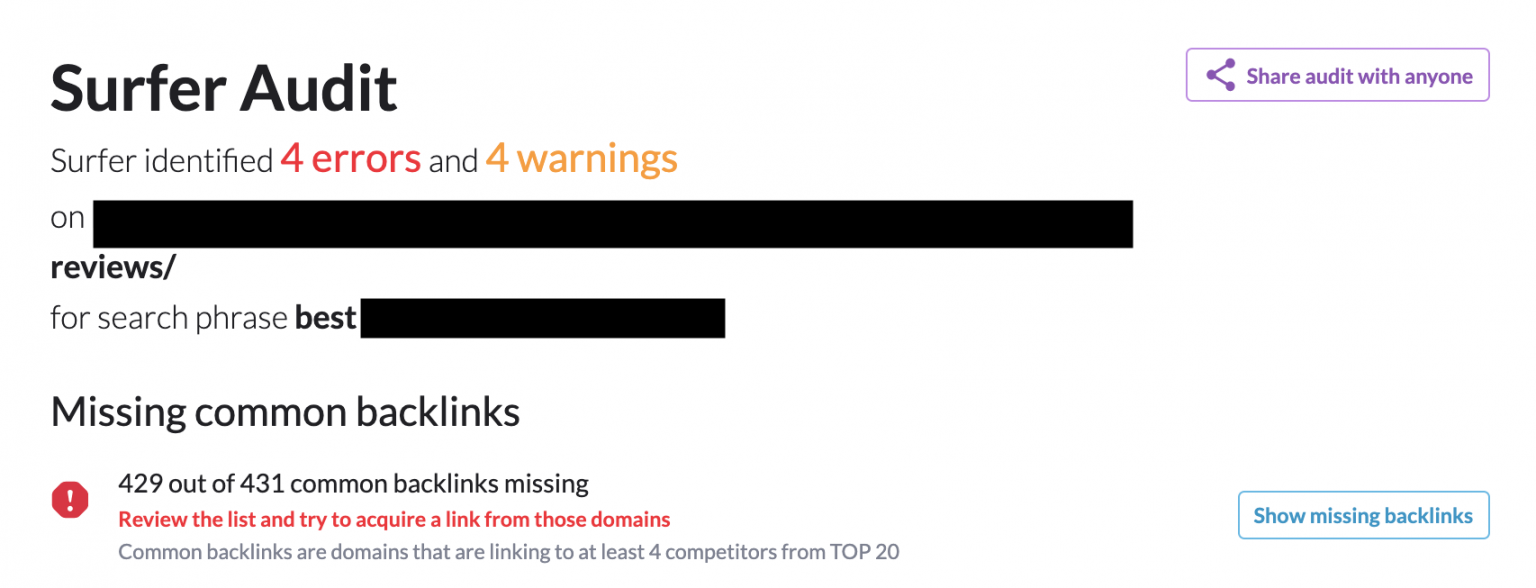
This is the first part, as an overview of the problems the content site is facing. There is also a section called “Missing common backlinks” (albeit in beta). However, I will not evaluate the backlink section because this Case Study I want to focus 100% on Onpage only, this is captured for everyone to refer to

Next is the True Density section, one of the essential parts of the whole process. Surfer SEO will tell us which terms (phrases) we need to add or remove. If it is a word, people click on the column “Words,” and the name is “Phrases.”
Looking here, I can see that this content page is still in need of many more (phrases) and needs to be added. There are also a few (names) words that need to be removed to avoid over-optimization.
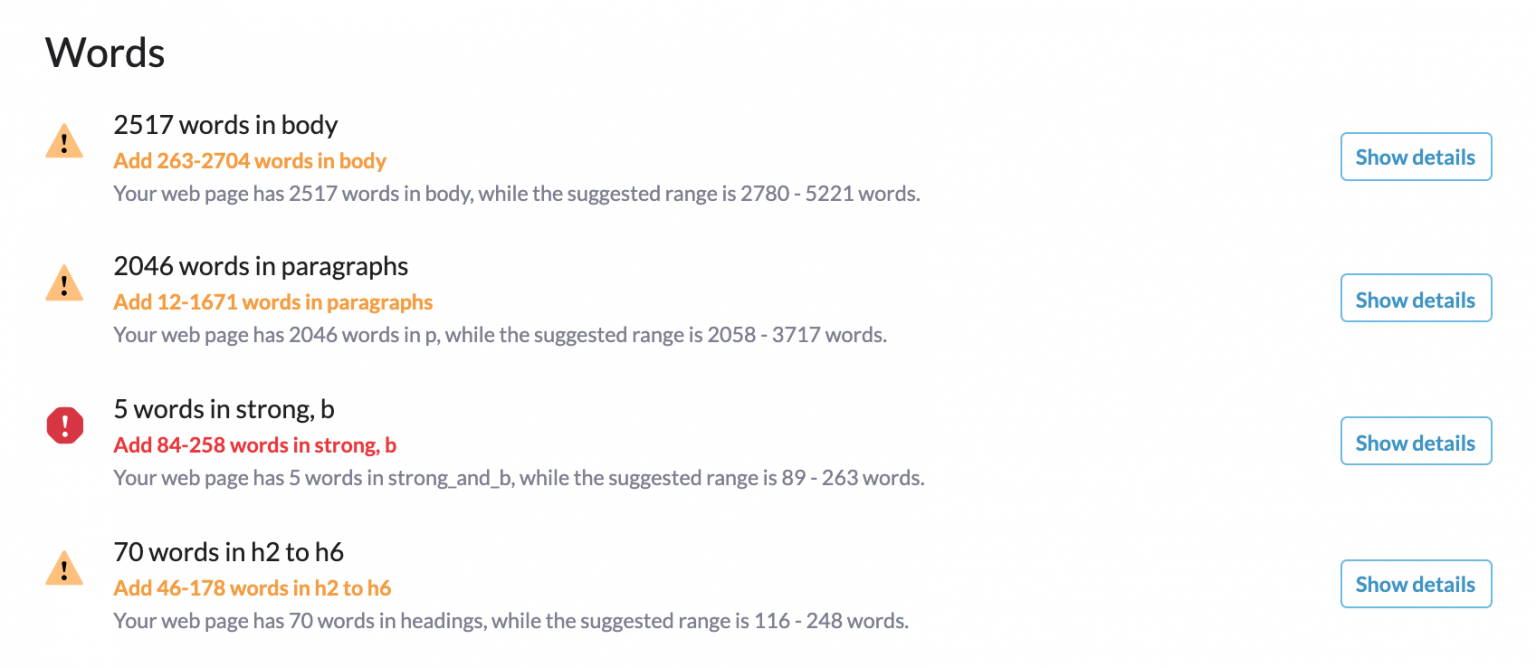
Next up is the Words section, which will tell us how long our content is compared to our competitors. There are also extras like headings (h2 through h6), tags bold (strong/aggressive). At first glance, there seems to be a lot of things to do …
However, having data here does not mean that people should blindly follow these indicators. With each of these numbers, people should click on “Show Details” to see more detailed reports before deciding. For example, I find the bold card appearing too much, so I want to see if the data is really “average” like that.
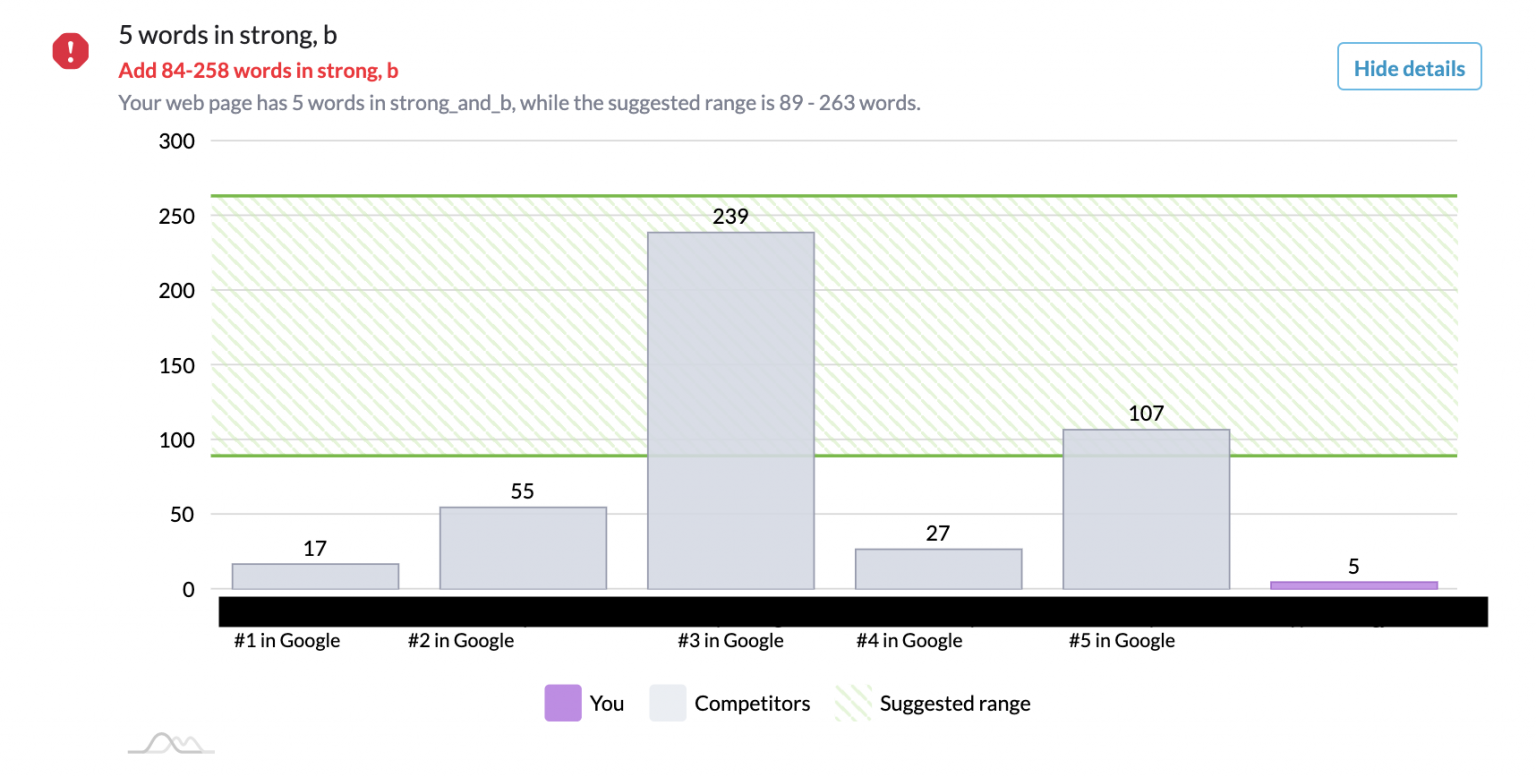
We can see that the numbers are getting noisy by looking at the details because # 3 and # 5 are using too many bold tags, so the average is not accurate. So I chose to optimize this bold tag according to the data of # 1, # 2, and # 4 because it looks so much more natural.
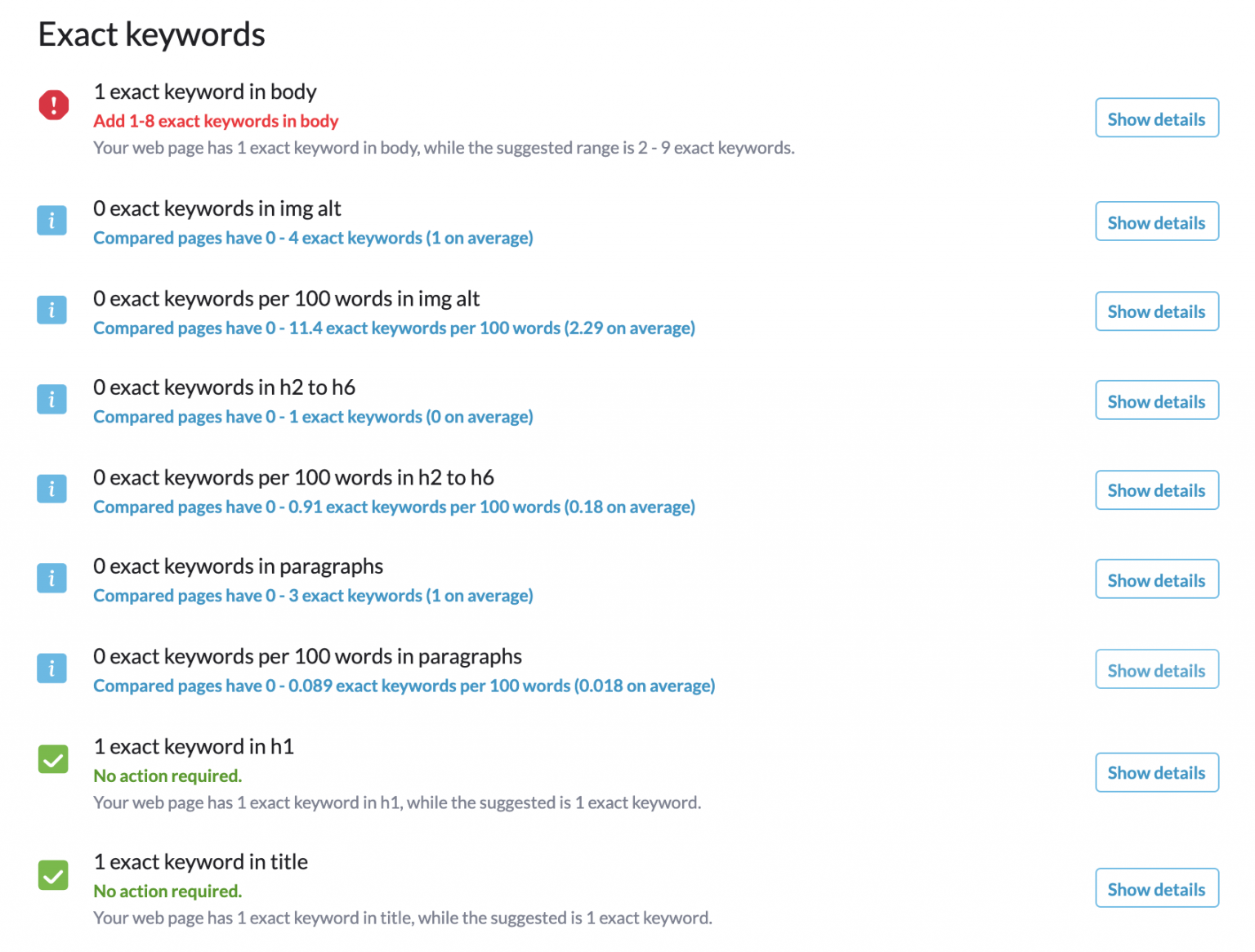
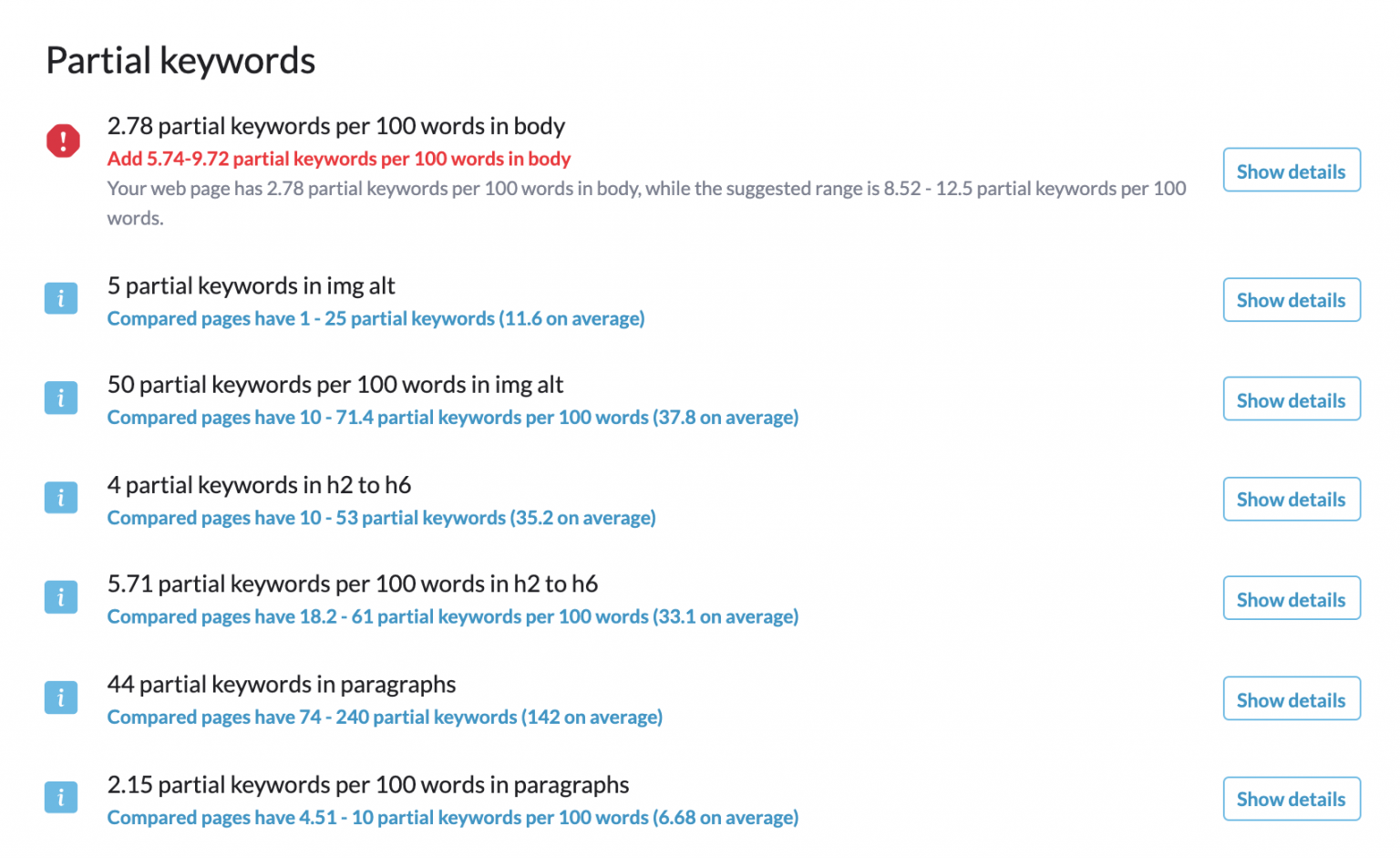
Next is the Exact Keywords and Partial Keywords section, which will show us the optimal density of the keywords and related keywords.
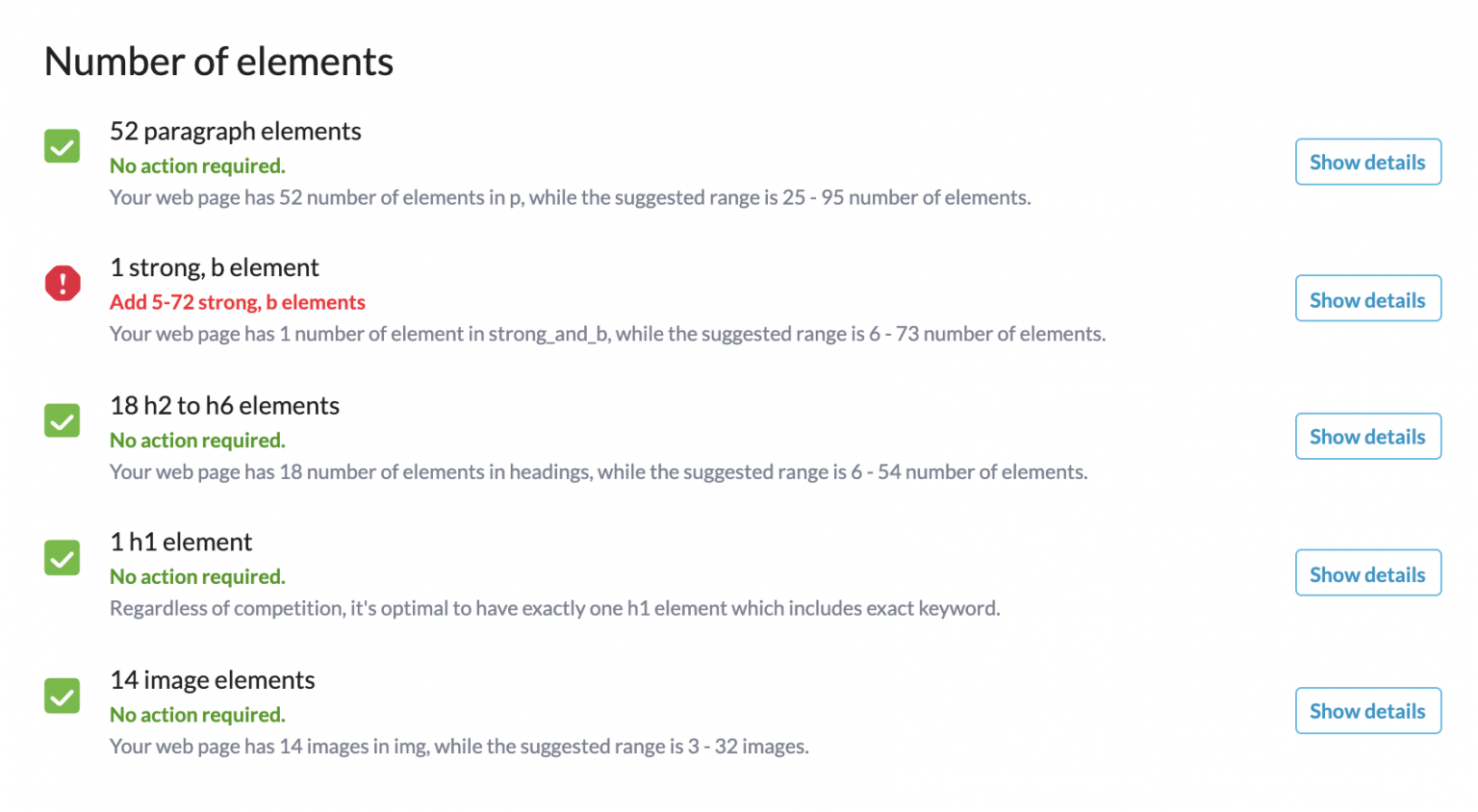
Next is Number of Elements. This section will analyze elements such as text, bold tags, headings tags, images and provide data for us to consider and optimize.
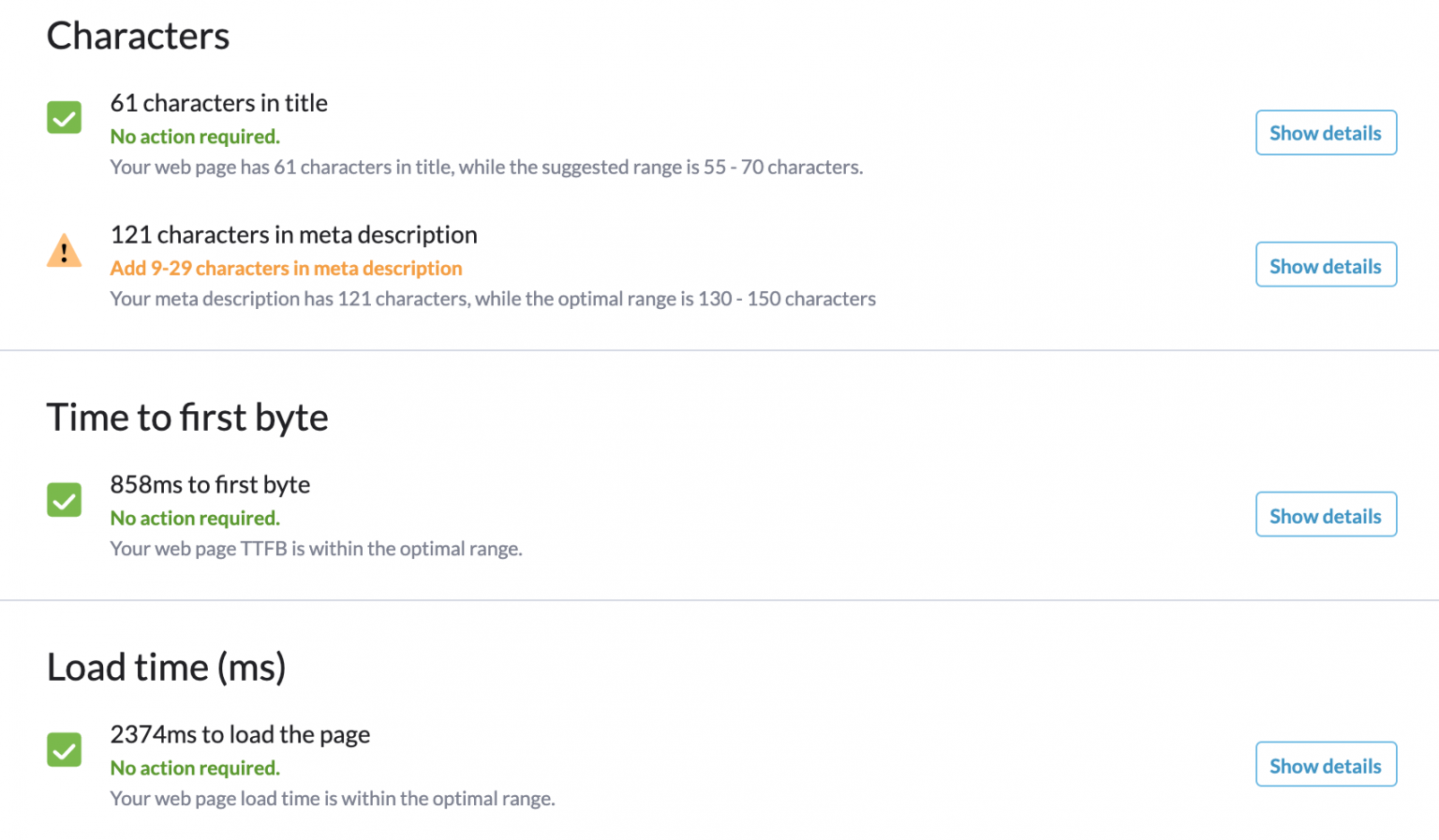
Finally are relevant metrics such as the number of characters (Characters) and other speed (Time to the first byte and Load time).
Okay, so that’s the detailed Surfer SEO analysis and report. The next thing I need to do is sit back and review and optimize these factors according to the tool’s recommendation.
After the optimization is complete, I refresh and hit “Audit” again on the content page to see if things are getting better. Below, everyone can see their optimal results after nearly 3 hours. I will leave the image parallel before optimizing and after optimizing for everyone to follow.
The first is True Density.
As you can see, I’ve also optimized the words (which I think) are essential for a content page about this topic.
Even though I could do more, I was too busy, so after I finished optimizing the essential words, I thought, “Stop doing that, let’s see how to work,” so everyone can see there is. Some words I can still optimize.
Followed by Words, Exact keywords, Partial keywords, Number of elements, Characters and Speed respectively
At first glance, it seems to be much better than before.
After the optimization is complete, re-submit the link using the Search Console tool and wait for the bot to come back to scan the page content.
Here are the results:
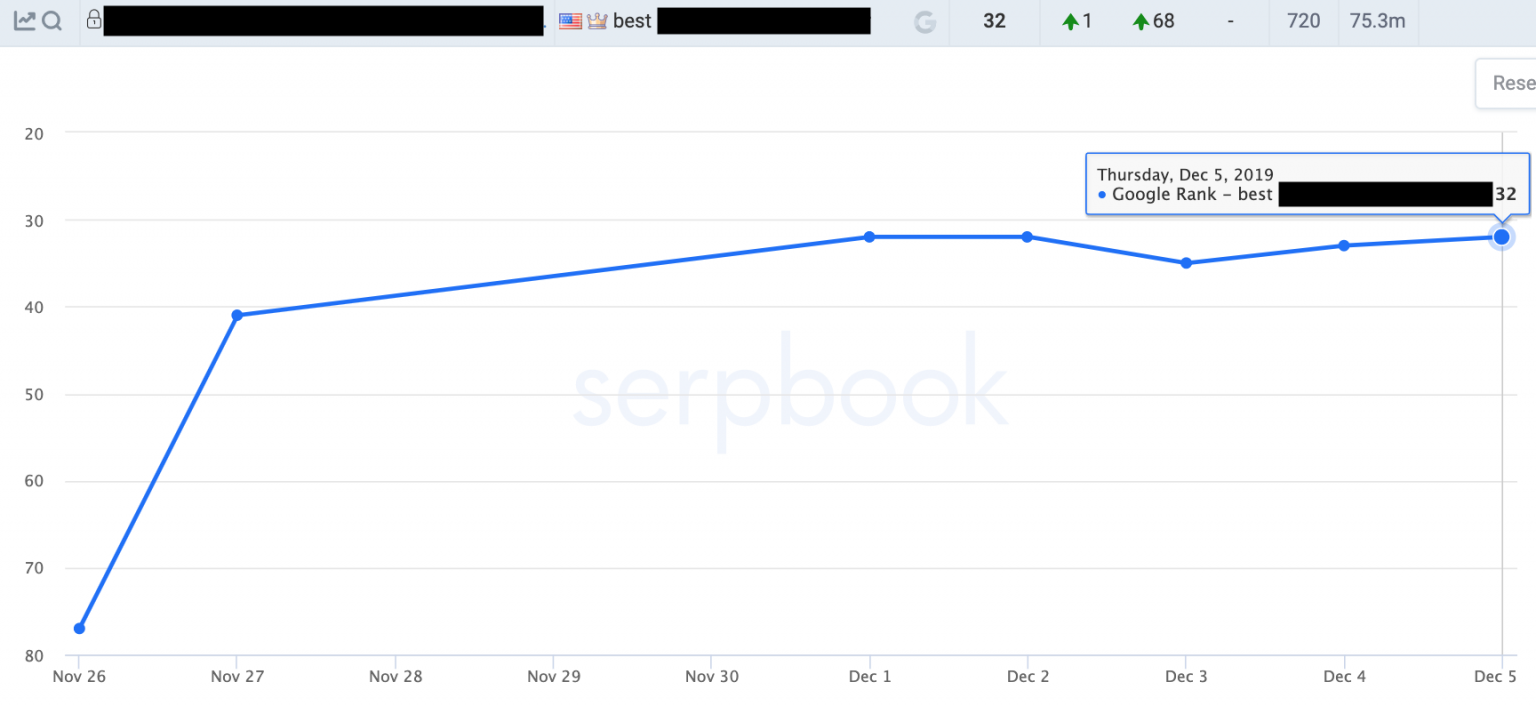
You can see that on November 27, after Google re-scanned its content page, the ranking jumped from 77 to 42. Then probably because the Serpbook was a bit blank, so it disappeared in 3 days from 28-30. / 11 although he searched, it was still at position 42. Then jumped to position 32 on December 1. By the time I wrote this article, the rank was 32 after two days of jumping around in that position.
CONCLUDE
So using a tool to generate specific metrics, analyze those metrics and optimize, my content page has improved its ranking from 77th to 32th in a week.
For one keyword buying, average competition, and especially without backlink help, I think this is a significant success.
Although Case Study is not flashy enough, the optimization is finished on page 1 (I also secretly hope so =)))). Still, I think, with such a small Case, everyone has also seen Tools like Surfer SEO can make the SEO process simpler and more effective for everyone.
No need to be emotional, no need to sit around one by one to report, let tools help you make more effective decisions for your SEO campaign.
If you are interested in Surfer SEO you can join Surfer SEO Group buy for $ 4.95 per month. We offer the full features of the premium plan
